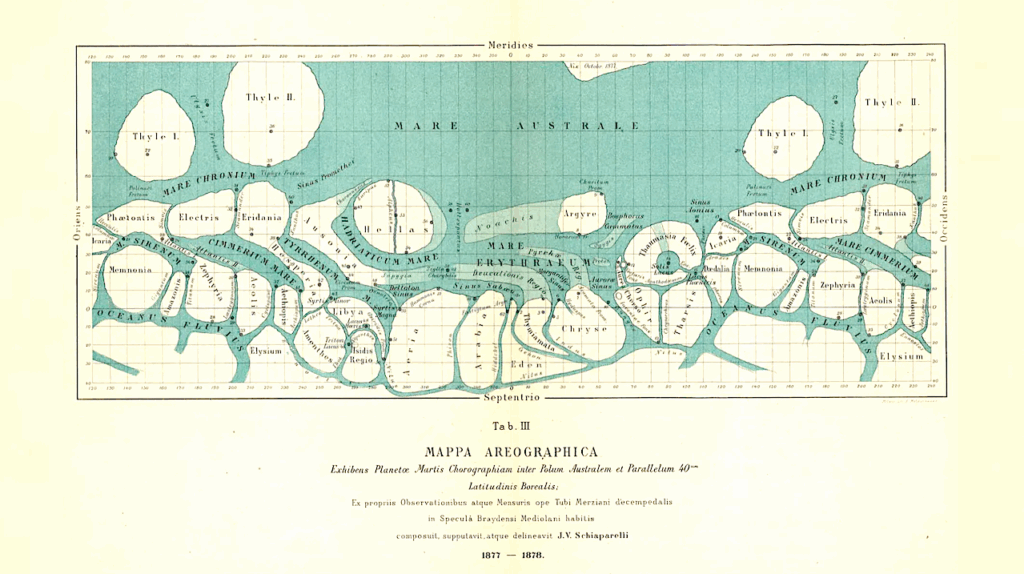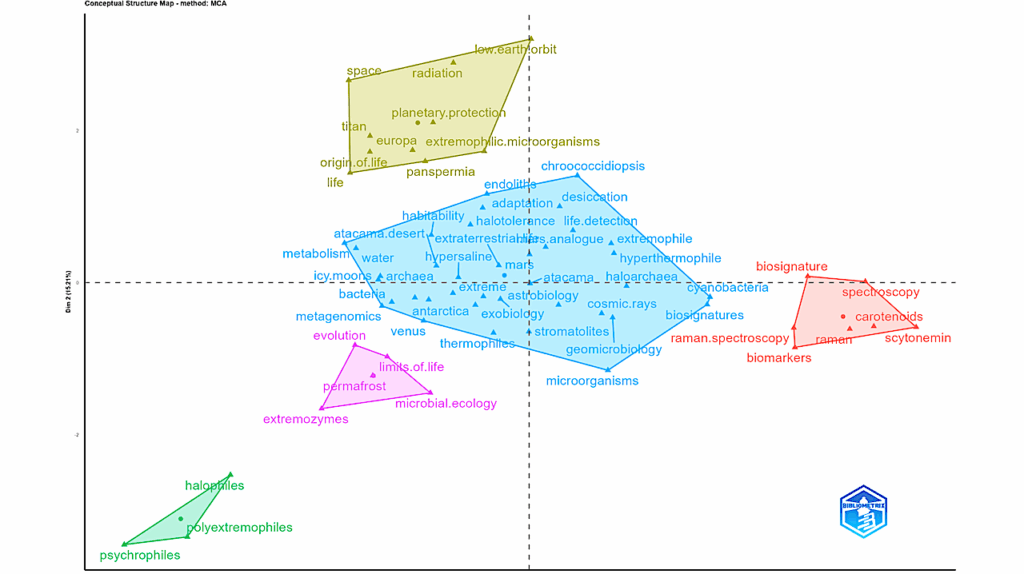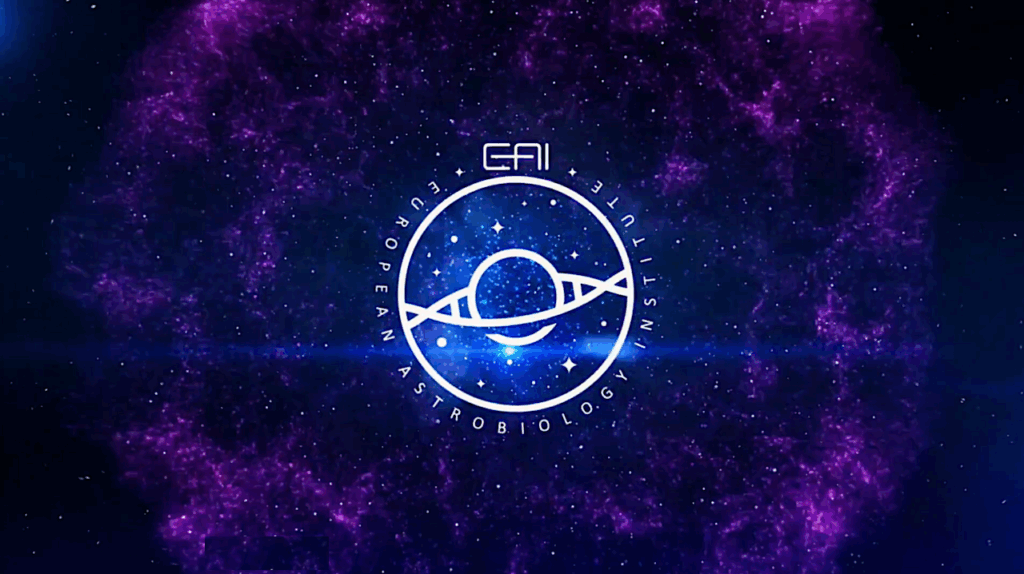There Are Astrobiology Emojis On A Droid Driving Around Mars
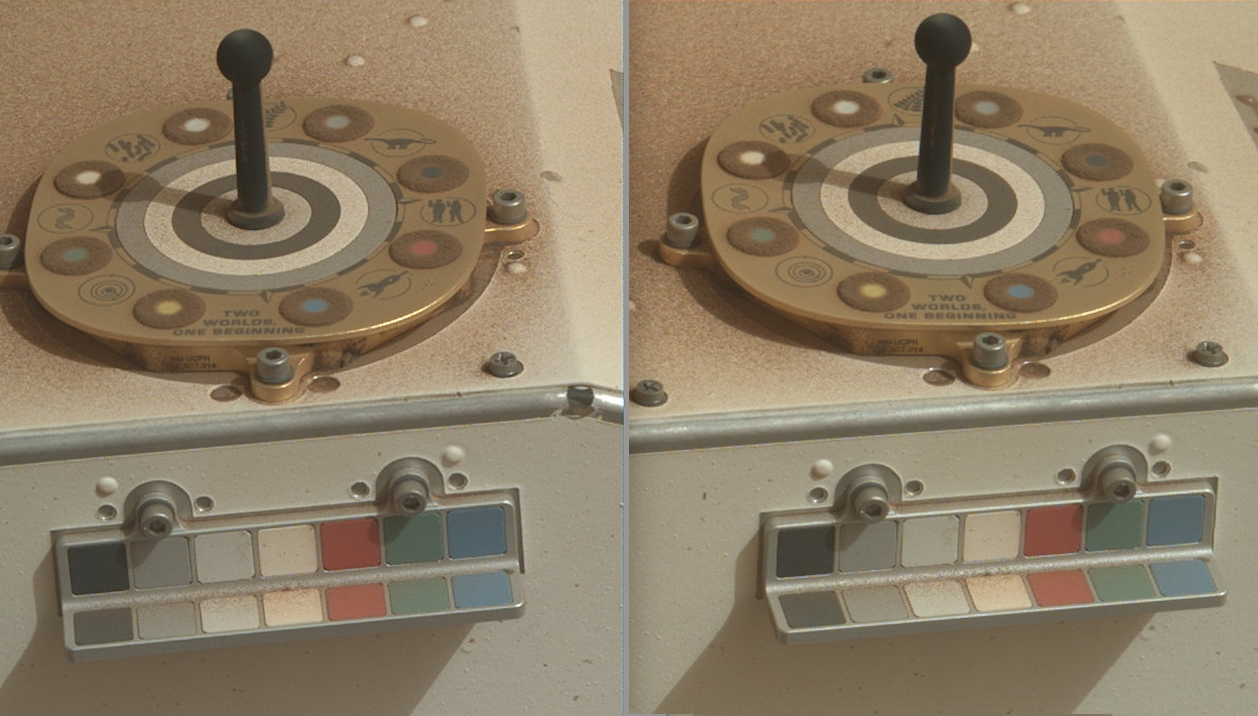
Editor’s note: In case you have not spent time going through the torrent of images from the two NASA Astrobiology Mars Rovers currently in operation, there’s one feature on Mars Perseverance that is worth making note of: Astrobiology Emojis. There is an image calibration target that doubles as a sun dial. The Planetary Society arranged for it to be sent to Mars – as they have with things on other Mars missions. The echoes of Carl Sagan are abundantly obvious – and intentional. To enhance the Saganistic message “Two Worlds – One Beginning” there are symbols (emojis) depicting the origin and evolution of life on Earth. If you are one of those people who can cross your eyes to see stereo images – have fun with the main image – I have arranged them for cross-eyed viewing. Or look at the larger one here if you have a mega monitor. Even in mono it is cool.
Mastcam-Z Made You Look, NASA
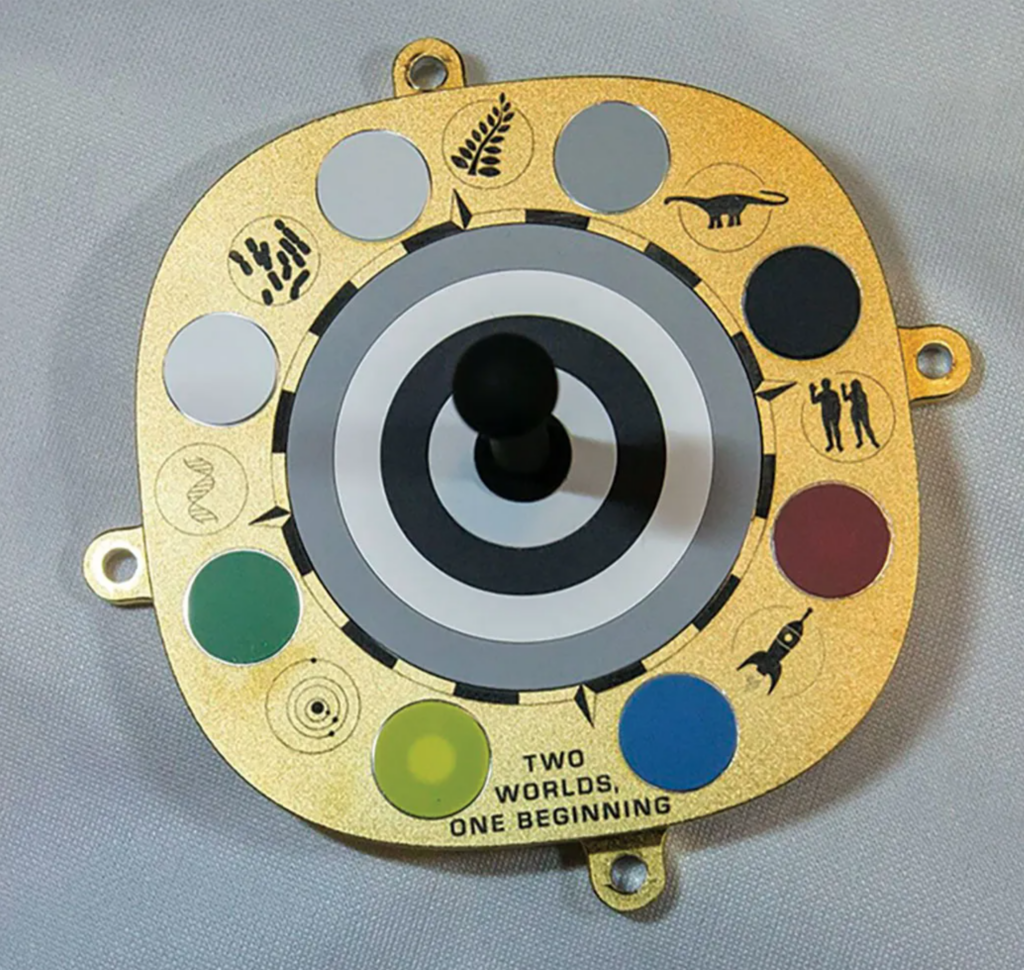
Scientists use the color swatches on the primary calibration target for Mastcam-Z – a pair of zoomable cameras aboard NASA’s Perseverance Mars rover – to fine-tune the cameras’ settings. Symbols and mottos relevant to the mission are included around the target’s perimeter. Credits: NASA/JPL-Caltech/ASU/MSSS/U of Copenhagen
Serving as Perseverance’s main “eyes,” Mastcam-Z is the latest in a line of instruments that Bell has helped develop. The instrument’s primary calibration target, which doubles as a sundial for educational purposes, includes color and grayscale swatches. These help scientists ensure the cameras’ color settings are correct, given that the position of the Sun and the dustiness of the sky can affect the lighting in images.
Spirit and Opportunity carried similar sundials, which bore the motto “Two Worlds, One Sun,” while Curiosity’s sundial reads, “To Mars to Explore.” Mastcam-Z’s sundial motto is “Two Worlds, One Beginning,” referring to the idea of Earth and the Red Planet growing out of the same proto-stellar dust.
Besides the motto and swatches, the sundial displays small line drawings of early life forms on Earth, including cyanobacteria, a fern and a dinosaur. There’s also a man and woman similar to those on the Pioneer plaques and the Golden Record. It’s all in tribute to Perseverance’s astrobiology mission, searching for signs of ancient microbial life on the planet’s surface.
Just out of view, on the outer edge of the calibration target, there’s a bonus inscription: “Are we alone? We came here to look for signs of life, and to collect samples of Mars for study on Earth. To those who follow, we wish a safe journey and the joy of discovery.” Surrounding the message is the phrase “Joy of Discovery” in a variety of languages.
Source: 5 Hidden Gems Are Riding Aboard NASA’s Perseverance Rover, NASA
Mars in Full Color: Calibration targets for the Mastcam-Z Cameras on NASA’s Mars 2020 Perseverance rover

Assembly drawings showing the components of the Mastcam-Z primary and secondary radiometric calibration targets. The shadow post or gnomon is made of aluminum and painted with an ultralow reflectance black paint. The grayscale rings are made of sintered alumina or glazed and matted aluminum-silicates, and they have the average visible-wavelength reflectances shown here. The color and grayscale patches are also made from the same materials, and are called (going clockwise): Red, Blue, Yellow, Green, White, Light Grey, Dark Grey, and Black. The eight Sm2Co17 magnets are each 11 mm diameter and 7 mm tall and are bonded 0.4 mm beneath each color patch. The base plate of the target is made of aluminum, coated with thin layers of silver then gold plating. The inset at upper right shows the components of the Mastcam-Z secondary calibration target. The color and grayscale patches are identical to those in the primary target, except the yellow is missing. Each patch repeats twice, once on the vertical face and once on the horizontal face. The base bracket of the target is made of aluminum. Photo credit: Niels Bohr Institute, Copenhagen, Denmark/NASA/JPL-Caltech/ASU.

This image shows the calibration target top surface with its engraved motto and graphics. The graphics consist of a set of seven small icons or “vignettes” together with a circular “compass rose” or pointing diagram. — ASU
The seven small vignettes depict the development of life on Earth, culminating in humans and space flight. Beginning bottom left and reading clockwise, they show Earth and Mars orbiting the Sun steadily since the birth of the Solar System. Our depiction of life on Earth transitions from its first beginnings as microorganisms, to plants, animals, and humans. Today, we send rockets carrying robots, and perhaps one day soon humans, from Earth to Mars.
In more detail, the seven vignettes are:
Mercury, Venus, Earth and Mars orbiting the Sun, symbolizing the formation of the Solar System and the steady revolutions of the planets in their orbits throughout the history of the Solar System. The orbital positions for Mercury, Venus, and Earth are depicted for the launch window in July 2020, and the position of Mars is based on its approximate position at the time of landing in February 2021.
A DNA strand, symbolizing the first emergence of the genetic code and of life on Earth. Perhaps life formed with similar genetic coding on Mars around the same time?
Cyanobacteria, symbolizing the early proliferation of microorganisms on our planet. This could also symbolize the possibility that microorganisms existed on early Mars.
A fern, symbolizing green plants spreading across the Earth’s landmasses.
A dinosaur (Apatosaurus), symbolizing animals and the great diversity of life on Earth. The original version of this vignette was more stylized but we changed it into a more realistic-looking Apatosaurus.
Humans. This vignette deliberately echoes the image of humans on the Pioneer plaques and reproduced in the Voyager Golden Records. On the Pioneer plaque, however, only the man is waving. The wave was meant to demonstrate the motion of the human arm, but the choice of the man as the person to wave and thus “greet” anyone encountering the probe was criticized by some at the time. On Voyager, the Golden Records include an encoded version of this image (as part of image #52) in which the woman is waving instead of the man. Our version has both the man and woman waving. Since the Perseverance rover is going to Mars, not into interstellar space, we were less concerned with communicating a flawed understanding of human arm motion to future viewers of the target, and opted instead to project friendly greetings from both people.
A rocket, symbolizing space flight, rovers flying to Mars, and potential future sample return and astronauts traveling to Mars in the future. Here, we moved in the opposite direction from the dinosaur in vignette 5, going from a more realistic original draft to a more stylized final version. We felt that an earlier version, with a realistic depiction of the Atlas V rocket that launched Perseverance, could be visually interpreted by some people as a missile (that is, a weapon). The stylized rocket takes inspiration from classic science fiction that was popular at the dawn of the Space Age, which in turn has inspired many to pursue and enable the exploration of other worlds, including Mars.
Source: Mars in Full Color: Calibration targets for the Mastcam-Z Cameras on NASA’s Mars 2020 Perseverance rover, ASU
astrobiology




